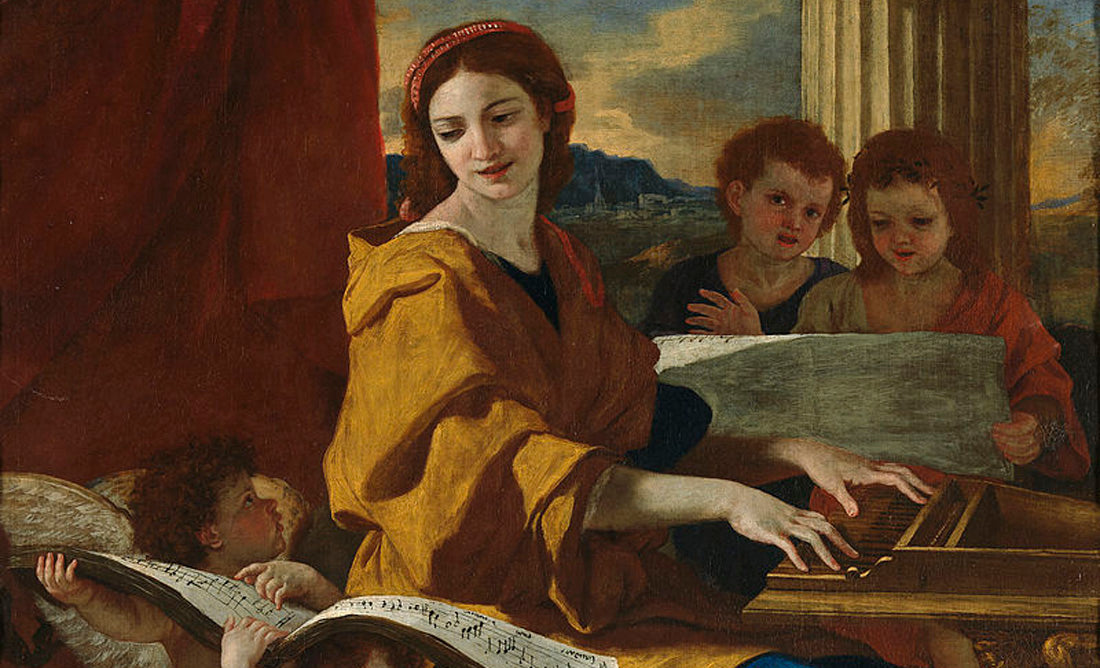Saint Cecilia, patron saint of musicians

Who was Saint Cecilia?
Saint Cecilia is said to have lived in Italy between the 2nd and 3rd centuries AD. Forcibly married after she had taken a vow of virginity, she managed to convert her husband Valerian to Christianity and make him respect her choice.

Valerian and his brother Tiburce, also converted, began to provide burials for the bodies of martyrs considered criminals. In the end, they were denounced, arrested and killed. At the time, Christians were in fact enjoined to deny their faith and to worship the gods of the Romans.
Cecilia, continuing to practice evangelisation, was in turn arrested and dies as a martyr. Found in 821 in the catacombs of Saint Callixtus (Rome), her remains were transferred to the Trastevere district where a basilica was built to house her.
Patron saint of musicians
If we can say that singing is at the origin of her patronage (already at her wedding, Cecile sang in her heart the praises of God while the musicians played), a translation error at the end of the 15th century attributed an organ to her. This idea passed to posterity and many painters and sculptors have represented her playing this instrument. Thereafter, it was represented with other instruments: harp, lute, violin...

The patronage of our saint is proved as early as the 16th century, when several brotherhoods and ceremonies took place. Since the foundation of the Academy of Saint Cecilia in Rome in 1594, annual celebrations have taken place in Italy, France, Belgium and England.
In addition, many composers have dedicated works to her: Dumont, Purcell, Händel, Haydn, Saint-Saëns, Gounod...
In the 21st century, Saint Cecilia remains a day of celebration for many musicians, laypersons or not: wind and amateur orchestras celebrate it through small parties, concerts and ceremonies during which musicians sometimes receive new instruments as gifts...